In this section, there are 5 questions about Positive-Negative Numbers. If you find it difficult to solve the questions; easy-to-understand detailed solutions can be found with the “Click for Solution” option. Good work.
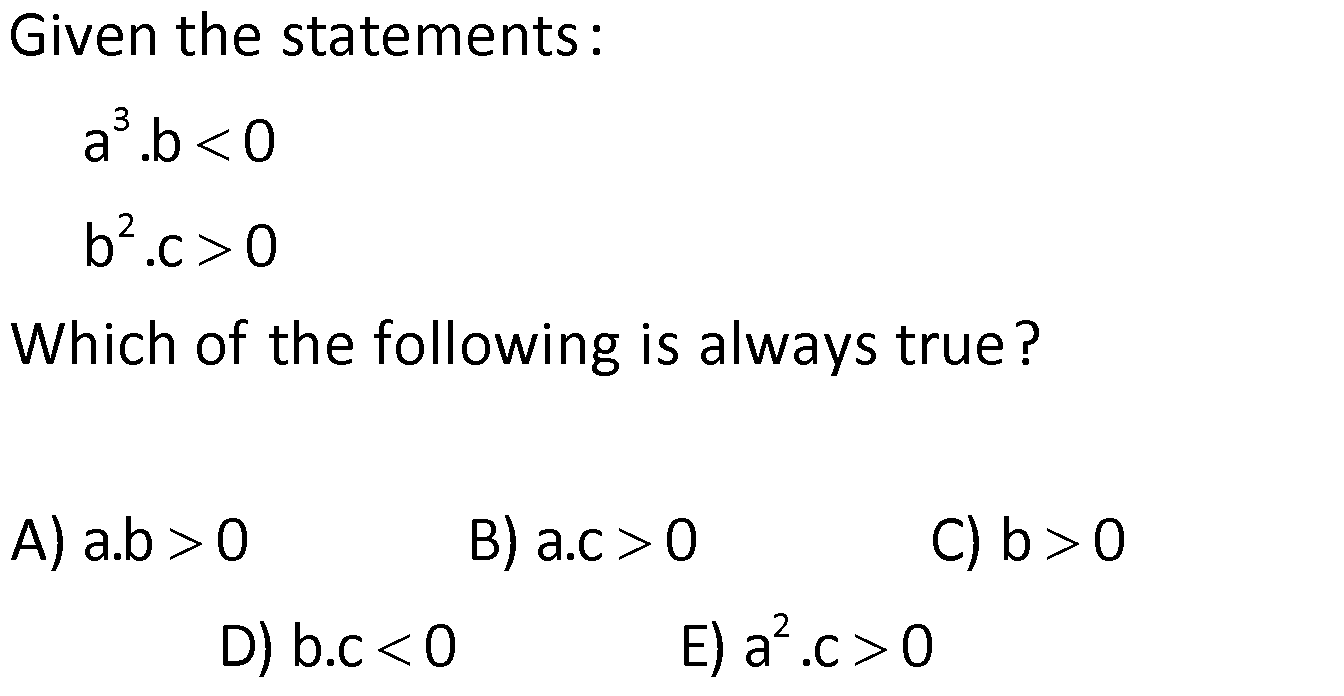
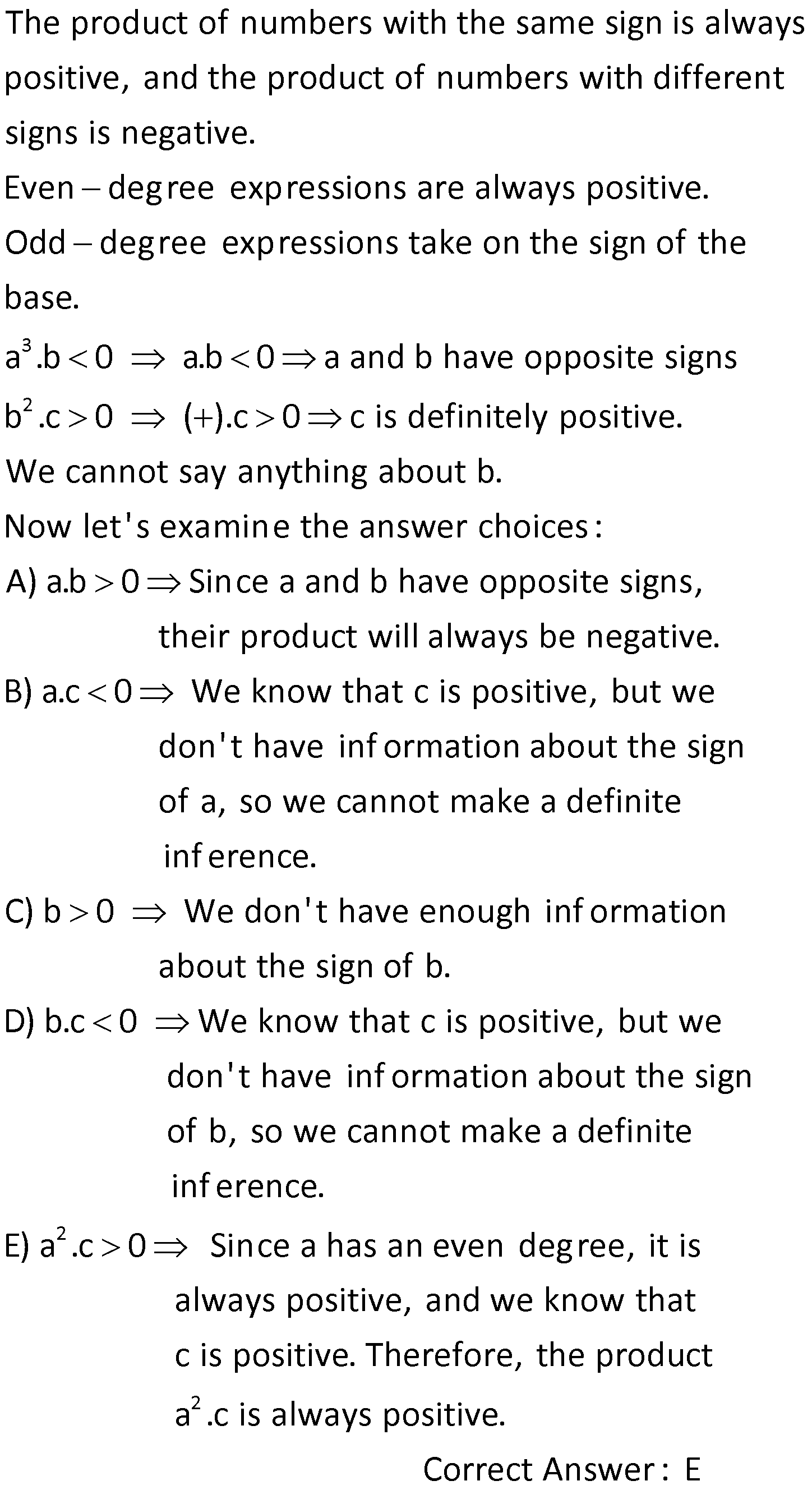
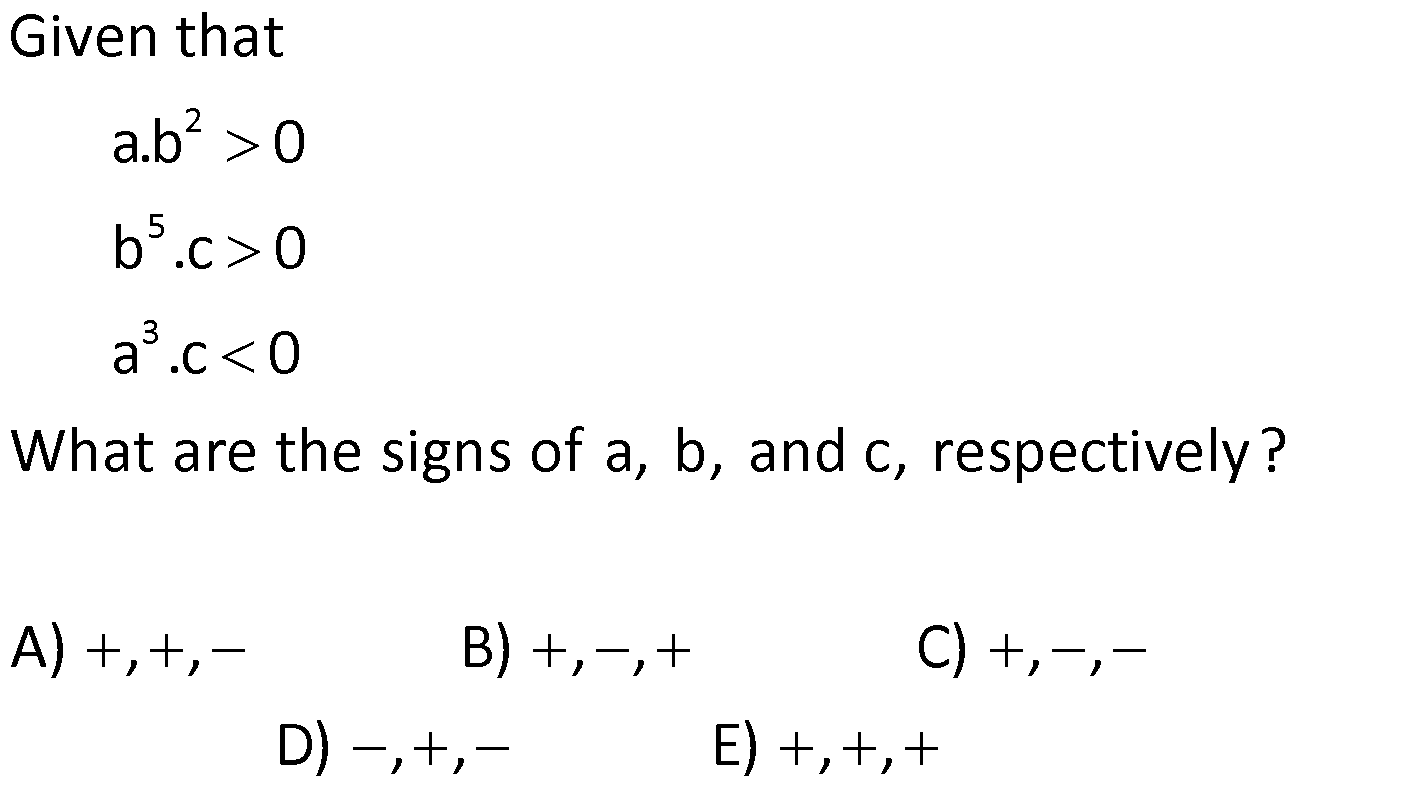
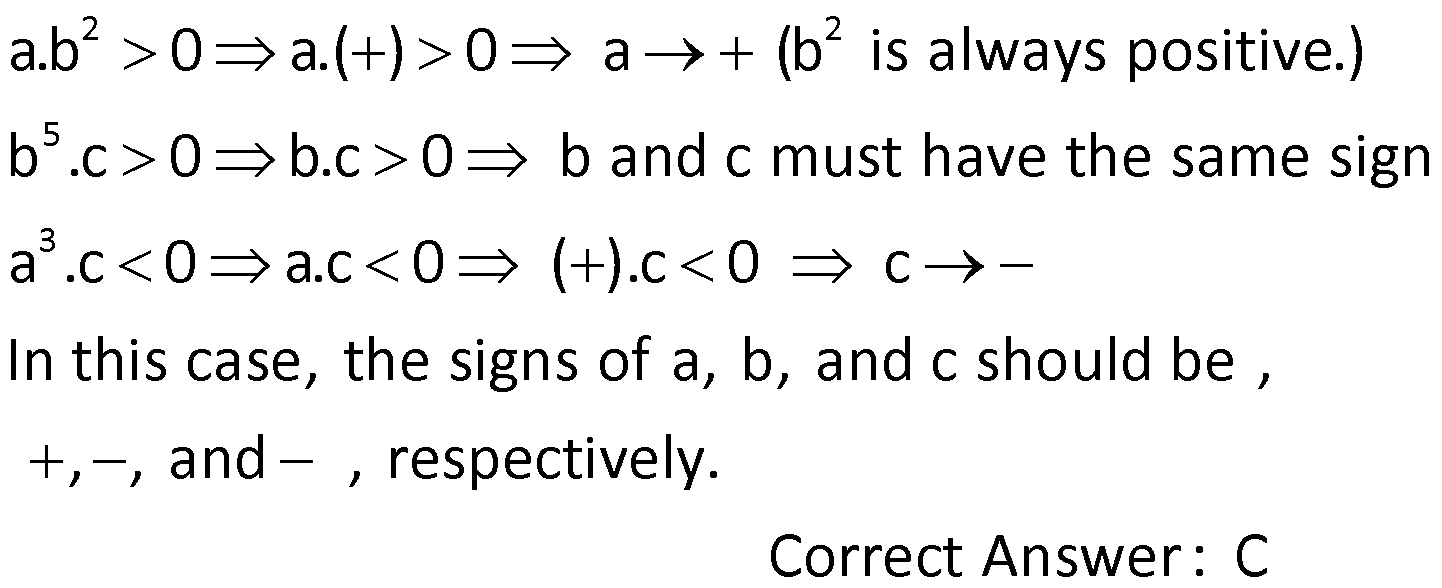
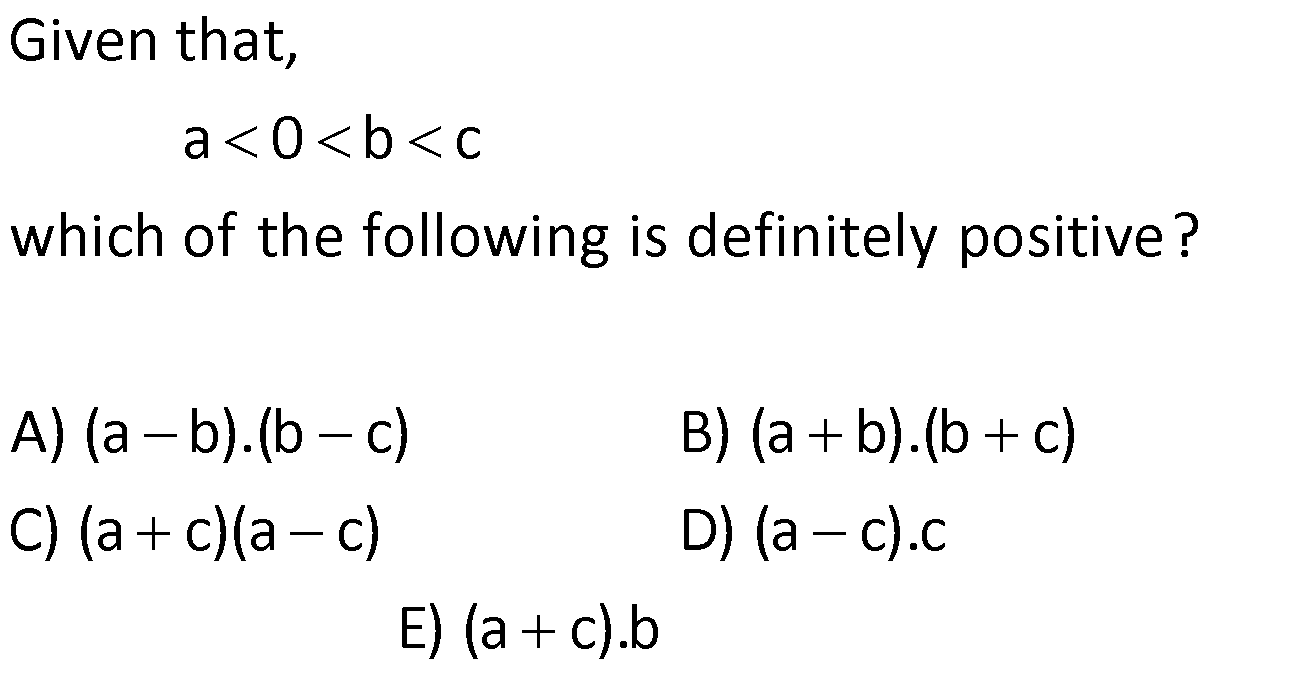
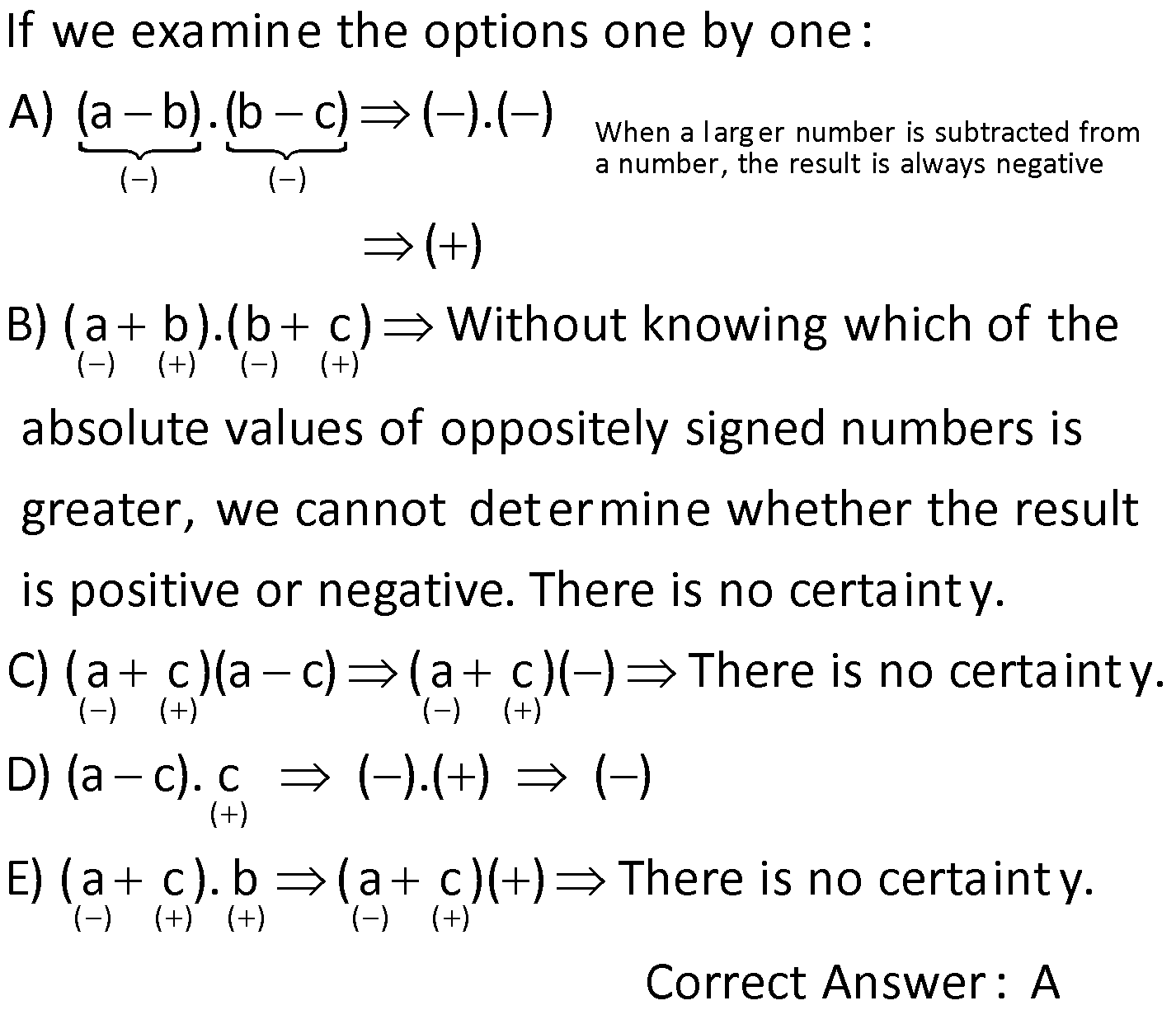

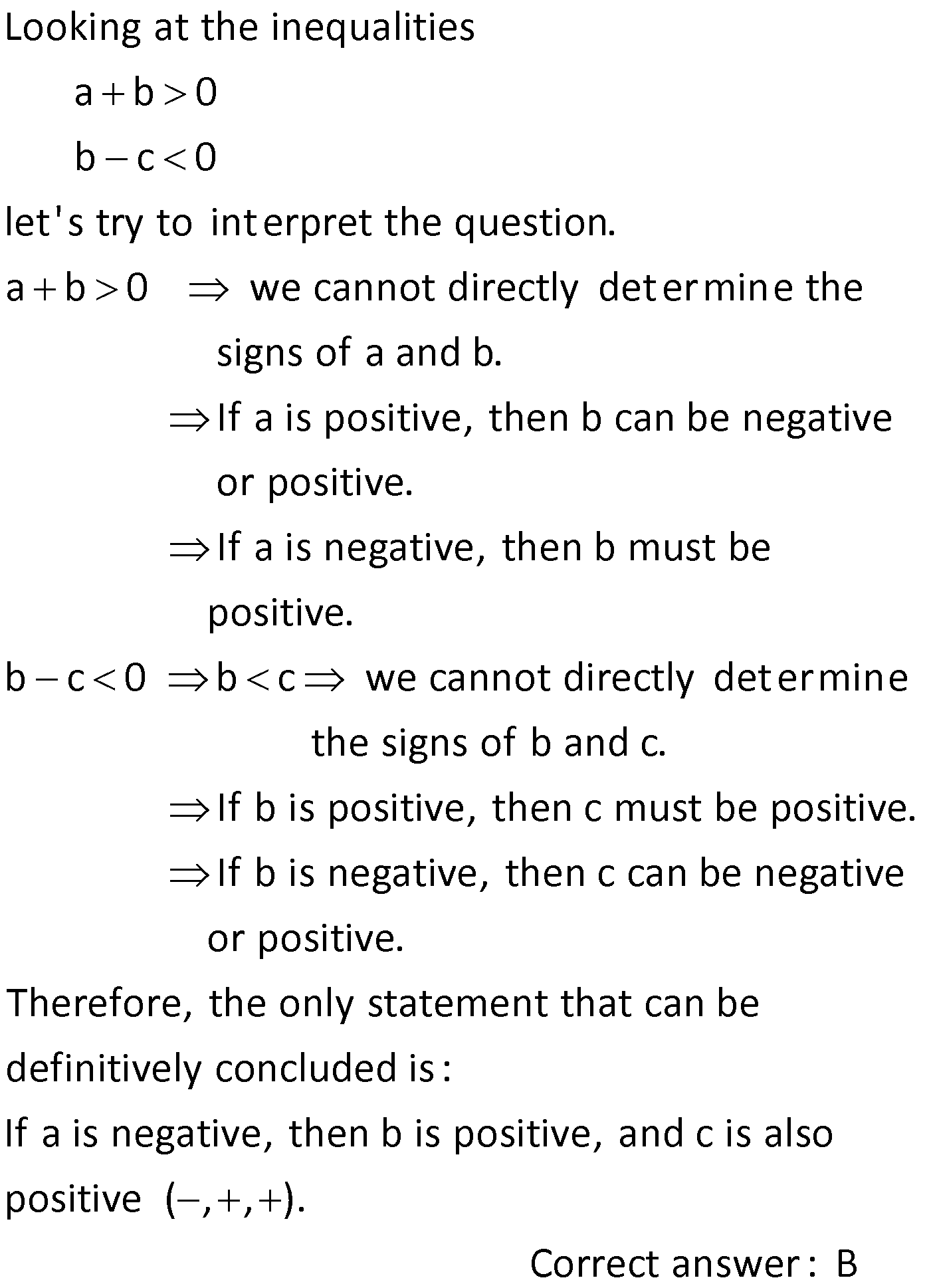
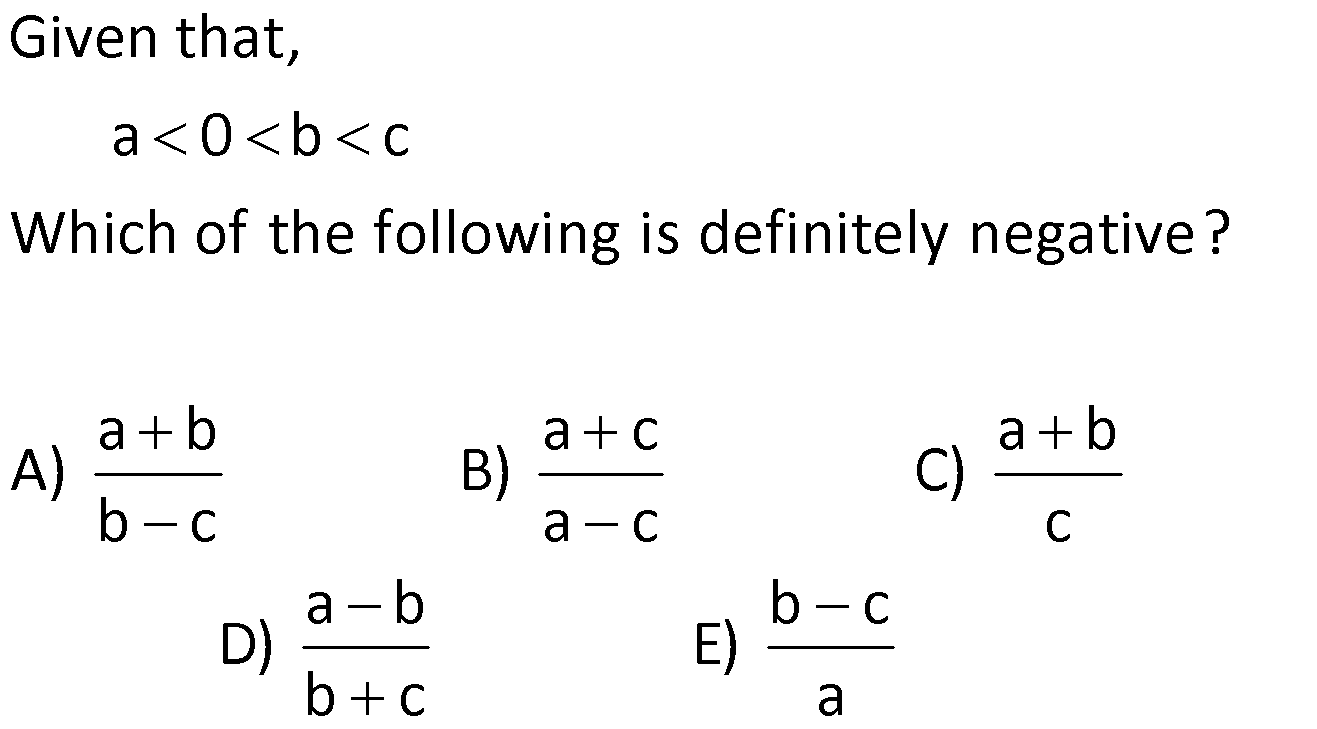
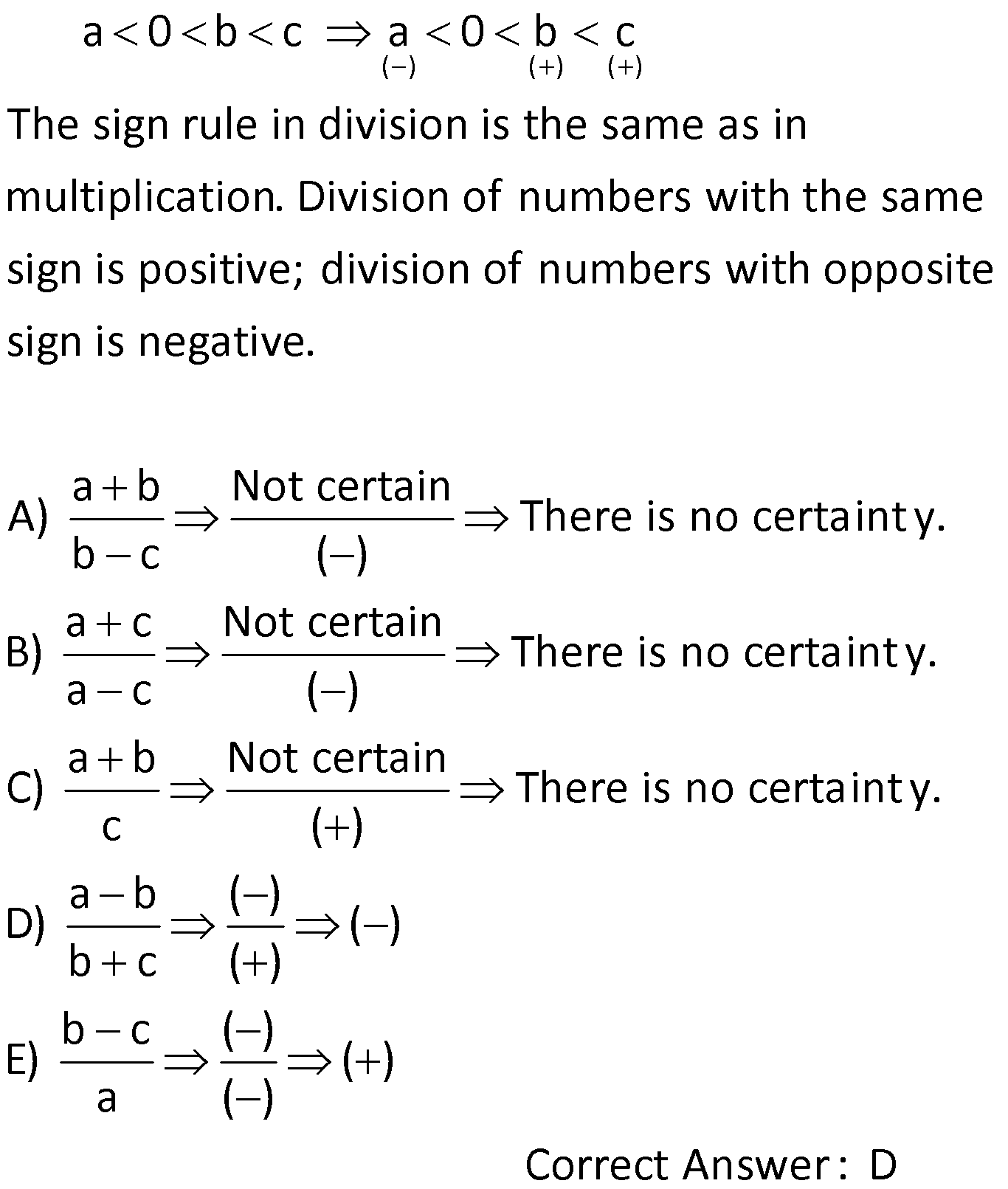
If you encounter any issues or wish to provide feedback regarding the questions or solutions, you can instantly convey them using the ‘Comment’ option located at the bottom of the page
POSITIVE NEGATIVE NUMBERS global.matematikkolay.net 1) 3 2 2 Which of the follow ing is always true Given the statements : a .b 0 b .c 0 A) a.b 0 B) a.c 0 C) b 0 D) b.c 0 E) a .c 0 ? Solution: The product of numbers with the same sign is always positive, and the product of numbers with different signs is negative. Even degree expressions are always positive. Odd degree expressions take on the s 3 2 a .b 0 a.b 0 b .c 0 ( ).c 0 c is d p efinitely positive. ign of the base. a and b have opposite signs We cannot say anything about b. Now let ‘s examine the answer choices : A) a.b 0 Since a and b have op osite signs, their product will always be negative We know that c is positive, but we don’ t have inf ormation about the sign of a, so w . B) a.c 0 e cannot make a definite inf erence We don’ t have enough inf ormation . C) b 0 ab 0 out the sign of b. We know that c is positive, but we D) b. c 2 don’ t have inf ormation about the sign of b, so we cannot make a definite inf erence. Since a has an even degree, it is E) a .c 0 2 A always positive, and we know that c is positive. Therefore, the product a c y s v . w a s p s t . a o i C e o r l r e i i ct nswer : E 2) 2 5 3 Given that What are the signs of a, b, and c, respectiv a.b 0 b l .c 0 a .c 0 A) , , B) , , C) , , D) , , E) , , e y? Solution: 2 2 5 3 y a.b 0 a.( ) 0 a (b .) b .c 0 b.c 0 a .c 0 a.c 0 ( is alw ays positive b and c must have the same sign In this case, the , signs of ).c 0 c , , a a, b and c should be , nd , respectivel Correct Answer : C . 3) Given that, a 0 b c A) (a b).(b c) B) (a b).(b c) C) (a c)(a c) D) (a c).c E) (a c).b which of the following is definitely positive? Solution: POSITIVE NEGATIVE NUMBERS global.matematikkolay.net When a larg er number is subtracted from ( ) ( ) a number , the result is always negative A) (a b).(b c) ( ).( ) ( ) If we examine the options one by one: ( ) ( ) ( ) ( ) Without knowing which of the absolute values of oppositely signed numbers is greater, we cannot determine whether the result is positive or negati B) (a b).(b c ) ( ) ( ) ( ) ( ) ( ) ( ) ( ) ( ) ( ) ( ) v e. There is no certain ) C) (a c )(a c) (a c )( ) D) (a c). c ( ).( ) ( E) ( t y. There is no certaint y. a c ). b (a c )( ) h n T ere is no certai t y. Correct Answer : A 4) B G which of the following is definit ely true for a, b, and c? If a is a positive v number, then b is negative. I 0 i f a is a ne gat iv c e n t u h m b A B er, 0 b t a h e n b c i a s n ) po e t , ) sit ) C ive. . oth a and b are definitely positive numbers. c is definitely a positive number. If b is a negative number, t hen c is ) pos D E) itive Solution: Looking at the inequalities let’s try to interpret the question. we cannot directly determine the signs of a and b. If a is p a b 0 b c 0 a b 0 ositive, then b can be negative or positive. If a is negative, then b must be positive. we cannot directly determine b c 0 b c t the signs of b and c. If b is positive, then c must be positive. If b is negative, then c can be negative o . r positive Therefore, B he only statement that can be definitively concluded is : If a is negative, then b is positive, and c is also positive C .( orrect ) ans : , , wer 5) Given that, a 0 b c a b a c a b A) B) C) b c a c c a b b c D) E) Which of the followi i b ng s definitely a c a neg tive? POSITIVE NEGATIVE NUMBERS global.matematikkolay.net Solution: ( ) ( ) ( ) The sign rule in division is the same as in b multiplication. Division of numbers with the same sign is posit u m e ive; division of n b rs with opposite sign is negativ a 0 b c a 0 b c a A) e . Not certain There is no certaint y. b c ( ) a c Not certain B) There is no certaint y. a c ( ) a b Not certain C) There is no certaint y. c ( ) a b ( ) D) ( ) b c ( ) b c ( ) E) ( ) a ( ) Correct Answer : D ANSWER KEY 1 E 2 C 3:00 AM 4 B 5 D